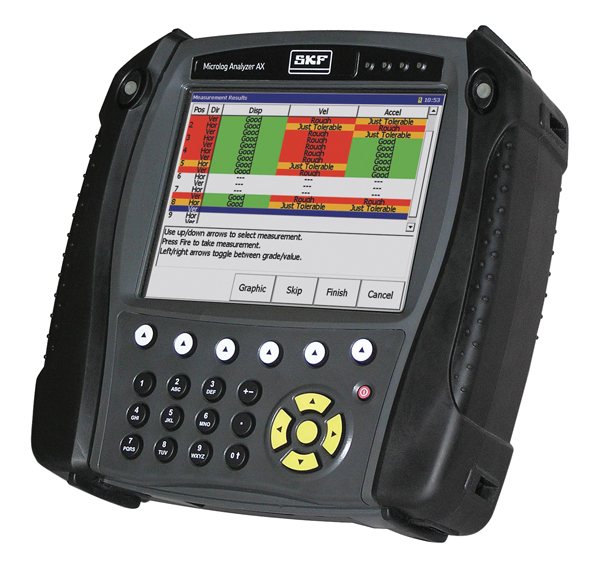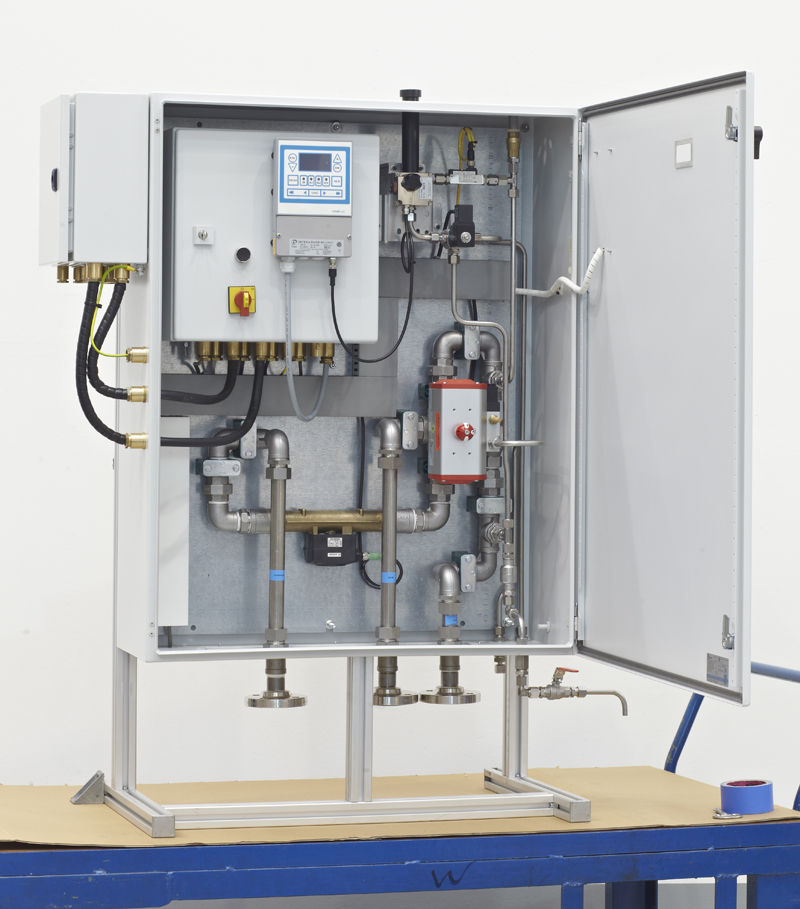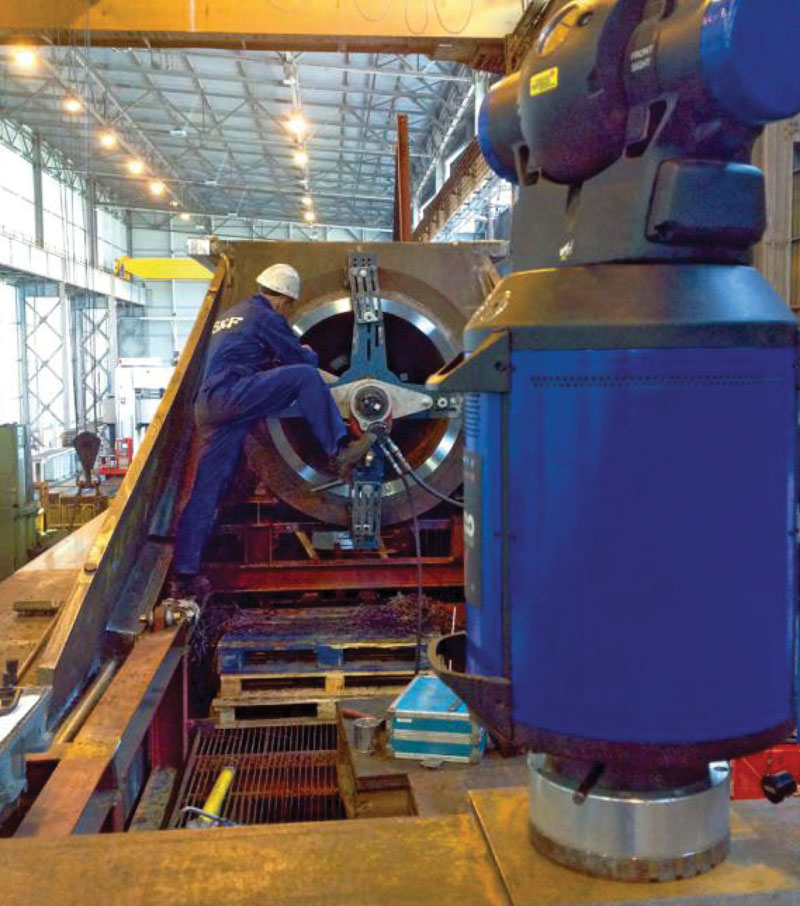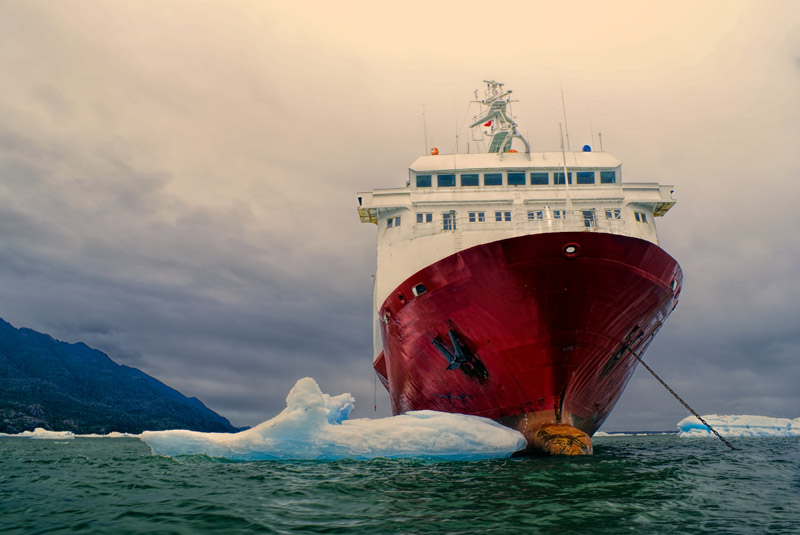November Feature Story - SKF
Ship Shape: Condition Monitoring in the Marine Industry
Condition-based maintenance (CBM) is a tried and trusted technique within the world of manufacturing. It helps to improve the overall machine efficiency and ensures timely and accurate repair of machines by keeping a constant watch on their condition and identifying errors before they can cause problems.
Any industry that uses a lot of independent machines can derive enormous benefit from CBM. For this reason, at SKF we see considerable potential for CBM in the marine sector. For example, the needs of marine customers are similar to those in manufacturing: improving maintenance procedures, boosting uptime, and cutting costs. However, the industry’s natural conservatism coupled with reliability, stringent regulations, and ever-tougher economic conditions means that the take-up of CBM has been relatively slow.
Cutting Costs
Shipbuilding is under as much pressure as any other manufacturing sector, while ship owners are also trying to make their operations as lean as possible. They must minimize cost by, for example, optimizing trade routes, reducing cruise speeds, and improving fuel efficiency to protect operating margins.
Although cost-conscious ship owners might see CBM as an unnecessary expense, the reverse is in fact true. By investing in the CBM technologies that are already widely used and proven for reducing machine operating and maintenance costs in the manufacturing sector, ship owners and operators can benefit from the efficiencies that arise from greater machine reliability; in many instances, this can have a positive impact on the number of days each vessel can remain at sea.
The early adopters of CBM have been the highest value vessels, such as cruise ships and those used in the oil and gas sector. Increasingly, however, we are seeing the implementation of CBM technology in a far wider range of cargo ships, large and small.
Traditionally, a ship used in the offshore sector is brought into dry-dock every 2.5 years for a complete overhaul of on-board machinery; for merchant ships generally this period is longer, at around 5 years. In each case, every day that the ship is in dry-dock represents lost revenue.
Investing in automated condition-based monitoring systems could potentially delay the need for these major overhauls—meaning that a ship will undergo fewer major maintenance operations during its lifetime and spend more time at sea. Routine repairs can also be carried out with more confidence and planned so that they can be completed while vessels are in port or at sea so that normal operations are not affected.
Data can be gathered in a number of ways. On-board engineers can use instruments such as SKF’s Microlog hand-held devices to carry out portable data collection or use online systems where fixed sensors mounted in dangerous or hard-to-access areas are hardwired back to a central on-board control room. Data can, therefore, be analyzed by ship engineers or, more commonly for critical equipment, transmitted to a shore-based facility for interpretation by remote experts.

Microlog AX-CTC.
Bandwidth Issues
Of course, there are some key differences that do not translate directly from the manufacturing to the marine sector. One is the availability of network or satellite bandwidth.
By its very nature, condition monitoring generates large amounts of data. In a manufacturing environment with on-site analysis, data overload is rarely a problem. On board a ship, once the vessel is out of reach of land-based communications networks, it is impractical to send such high volumes of data over satellite links, especially if it has to compete for bandwidth with voice or other more critical communication. First, information must, therefore, be carefully analyzed and filtered, with only the most relevant data being transmitted for on-shore analysis.
Environmental Push
And it’s not just maintenance data that’s important. CBM is increasingly moving into performance monitoring, too. Ship owners require a large array of information, such as fuel consumption and emission levels to optimize operations.
New solutions are emerging to help meet these needs. For example, BVI’s Turbulo BlueMon is an emission monitoring system that records everything in one place. By linking to GPS position data, the system helps with marine MARPOL conventions compliance, so that if a ship is approaching an area with higher emission standards a warning can be sent to the bridge so that emission levels can be rechecked. Data remain available for 24 months, allowing later verification of compliance.
This and other systems are effectively filling in the ship’s logbook automatically—the kind of operation that is likely to become far more common in the future. Fitting this technology to an entire fleet would allow a ship owner to benchmark its environmental performance against industry standards or identify the best performing crews and vessels.
There is an additional benefit of centralized data collection in that it helps to overcome a common trend within the marine industry—that of engineers rotating between ships, with knowledge of individual vessels inevitably being lost as staff move on.

BVI’s Turbulo BlueMon is an emission monitoring system that records everything in one place.
Needs Analysis
SKF can also provide a Client Needs Analysis (CNA) to ship owners, helping them to improve on-board maintenance procedures. The CNA is a survey of around 40 questions that are put to the maintenance operations team. It takes a full day of interviews to gather the relevant information. SKF then generates a score of a company’s maintenance performance, often revealing immediate ways to boost procedures and cut costs. In addition, the report provides a roadmap for future improvements. CNAs are widely used, and proven, within manufacturing, but still in their early days in the marine industry. Nonetheless, they can be an excellent first step in planning the introduction of an on-board CBM solution.

SKF tech at work.
Where Next?
The marine industry will not adopt CBM overnight. The main focus of marine engineers is reliability as a means of optimizing vessel availability; this has historically been carried out using visual or time-based maintenance inspections, so changing the culture will take time.
Change will be driven by economic pressures and by ever-tougher regulations, such as on emission controls and machine safety. It will also be driven by companies such as SKF entering into strategic alliances with the goal of developing new and innovative technologies that offer ship-wide and fleet-wide condition monitoring.
Perhaps the biggest challenge faced by marine engineers is the management of multiple on-board machines; indeed, in many instances there are so many machines, from many different suppliers, on each ship that it’s much like a floating factory. For SKF, with our background in manufacturing plus our experience and alliances in marine applications, we are able to offer knowledge engineering solutions that help OEMs improve the performance and reliability of their systems and enable ship owners and operators to increase the time that each vessel spends profitably at sea.
For more information, visit www.skf.com.


